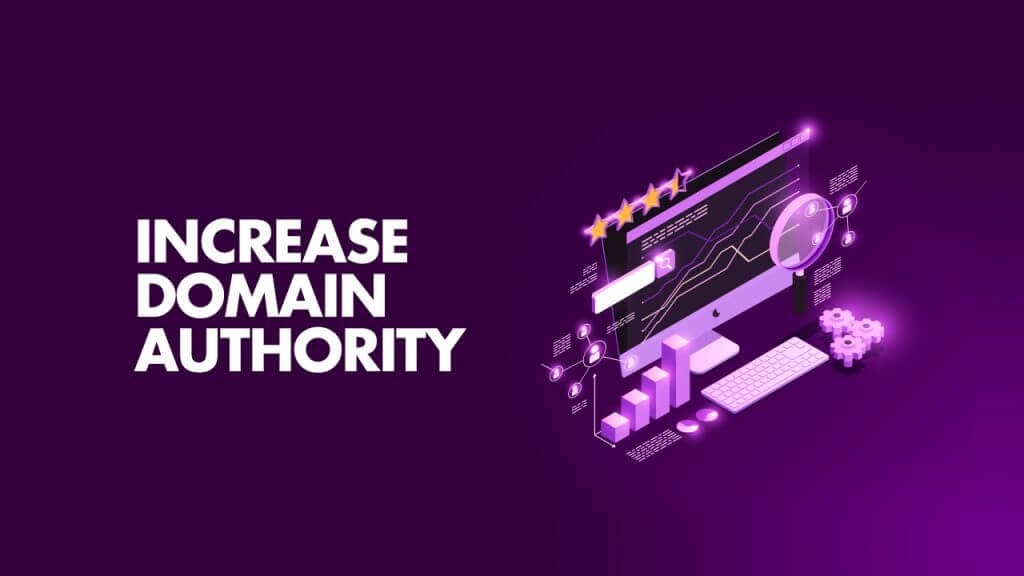Google takes into account more than 205 SEO factors to calculate the positioning of your website, and the Domain Authority is one of the most important
For some websites it is much easier to position content on the first page of Google. Even when this content is older than yours or of lower quality. This occurs because one of the factors that search engines take into account is the reliability or authority of the website. In this article we will show you how to increase the authority of a domain in a short time.
What is the Domain Authority?
It is an indicator that reflects the credibility of a website.
Google takes into account more than 205 SEO factors to calculate the positioning of your website, and the Domain Authority is one of the most important.
This indicator is a metric developed by Moz and based on different factors such as MozRank (popularity), MozTrust (reliability), social media, total number of domains that link to your website, total number of links to your website, quality of these domains and links, user experience on your website, loading time, traffic, etc.
Domain Authority is a logarithmic metric, that is, going from a 20 to 30 DA is easier than going from an 80 to 90 DA.
If our website stops being updated, receives some type of penalty from Google, or you begin to perceive some type of degradation in it (broken links, excessive loading time, 404 errors), it is most likely that your DA be reduced.
How to increase the Authority of a Domain?
Get more links (backlinks)
You have to work on the Linkbuilding of your website and try to get links from different domains, especially those with greater authority than ours. Remember that quality is more important than quantity.
Post content or resources that are useful to your audience and will increase the chances that that content can be linked from other domains.
Work on your content marketing strategy
It is not only about publishing quality and useful content, but you must know how to promote and disseminate it correctly.
You have to ensure that the content you have created reaches the largest number of potentially interested people.
Check and “sanitize” your incoming links, from time to time.
Before we said how important it was to receive links from other domains, mainly authority domains, that is why you have to ensure that you do not receive links from low quality sites, link directories (low quality or suspicious) or sites that may have been penalized .
It does not come only by preventing and not accepting links from these types of sites, but you regularly have to periodically check the Google Search Console tool, to find out if some of these pages are linking you and “de-index” those links if there are suspicions that they may harm you.
Build a good internal link structure on your website.
Internal links are those that from an article or page lead to another article on the same website. Every time you create new content, try to naturally link to other related content that you have previously created.
This technique is not only useful for a user who is reading your article and can expand that reading through other related articles within the same website, but for SEO and positioning purposes it is a good and recommended practice and will help you increase your Domain Authority.
To create a good internal link structure on your website, follow these recommendations:
✔ Use different anchor text, don’t abuse it over and over again.
✔ Try to maintain a balance between internal links and external links in each post.
Write exceptionally good content
Systematically, week after week.
Exceptionally good content is content that provides value to your readers.
You need to write new content or if similar content already exists, improve it by expanding its information; Be careful with posting duplicate content as it is cause for penalty.
Use Google Trends and buzzsumo to find relevant and current content.
Analyze the articles of your competitors and try to improve them in some way: through the use of infographics, with more current or more complete content, using structured data and microformats or even with better SEO On Page optimization in general.
SEO Off Page
In a good SEO Off Page strategy, you should work on the following points:
Guest posting : Forget about guest posting just to get a link. Guest posting to reach a large audience interested in the type of content you share and who will eventually become followers and regular visitors to your blog. If you still don’t get too much traffic on your website, guest posting should be one of your priorities.
Social bookmarking sites : Like Meneame or Delicious. Sites that can help you boost your articles and reach thousands of users.
Comment on other blogs: By commenting on other blogs you can demonstrate your authority and knowledge on a particular topic and get a good number of followers who are interested in your website and content. To achieve this, it is not useful to write a comment congratulating the author of the article and adding a couple of irrelevant lines. You have to write a comment that stands out from the rest of the comments on that article, something so worked and relevant that when someone else reads your comment they think «Who is this? I have to read an article of yours ».
Social media
In terms of positioning, it is never a good idea to stick to a single strategy.
Parallel to content marketing and Off-page and On-page SEO, use social networks to reach thousands of users who will help you spread the content of your articles, increase your visits, your weekly followers and also your Domain Authority.
Before launching, plan how you are going to use social networks.
Make your content easy to share. Add social buttons at the beginning and / or end of your articles.
Being active in social networks will help you spread your personal brand or that of your company, which will indirectly cause your followers to increase, the number of people who share and access your content and with it your Domain Authority.
Improve the navigability and usability of your website
The above techniques are all important. But in the end, all of them are aimed at other people visiting your website, “consuming” the content you offer and being so satisfied that after a while they will come back for more.
For users to feel comfortable on your website and come back, you have to take care of the usability of your site.
Remember: Why SIMPLE websites are scientifically BETTER
Specifically, these are the most important factors to improve the usability of a website.
Speed : Your website has to be fast, period. Use a CDN, make use of Google Hosted Libraries, hire a good hosting, and by practicing different techniques that help reduce the weight of your site and improve its speed.
Check the speed of your website and how to improve it, through the PageSpeed Insights tool. If necessary, outsource web design services so you can focus on generating content.
Usability: Take care of the design of your site. Try different plugins until you find the right ones. Make your website responsive. Check that all pages are displayed correctly from any device with tools like ScreenFly.
Navigability : Go through the navigation menu of your website from time to time. Analyze the menus and submenus and think about how you can improve them. Use analytics tools like HeatMaps to detect the most important parts of your website and the least relevant. Optimize the forms on your website, the contact section and don’t forget the Legal Notice page
Be patient
It’s a long-term job so be patient.
Use tools like Alexa or ahrefs to measure the progression and evolution of your website, month by month.
Compare your evolution with that of your competitors and analyze what you can improve and what is giving you good results.










